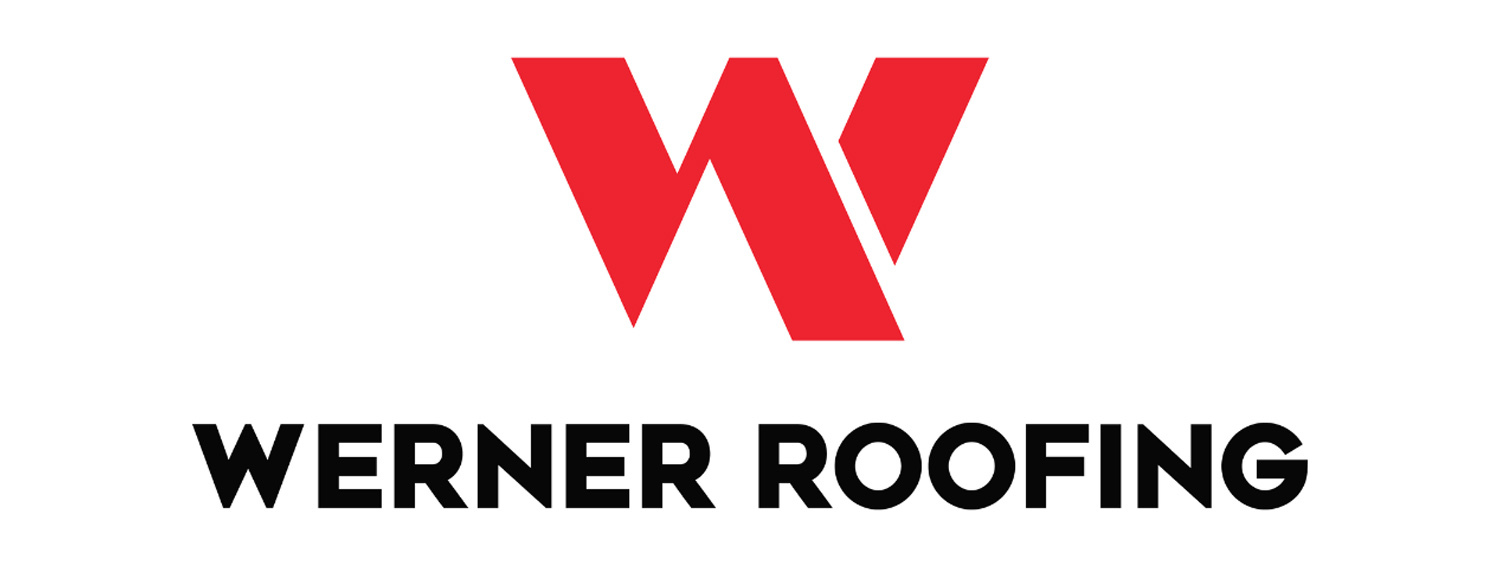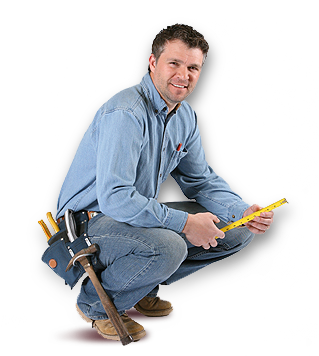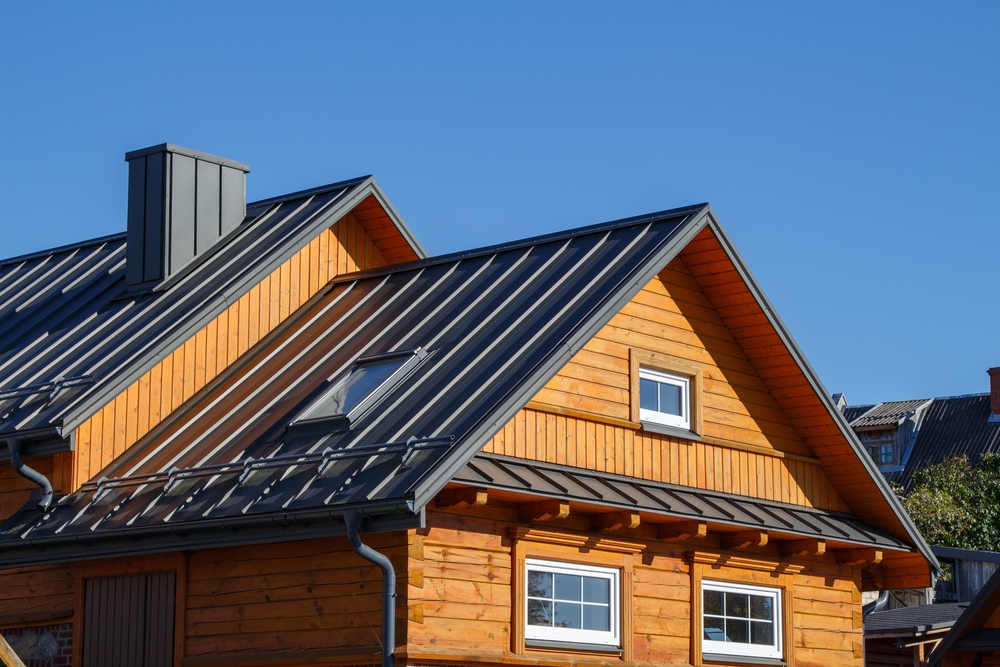
by elizabeth@evenbound.com | Jun 17, 2024 | Metal Roofing
Metal roofs have gained popularity recently due to their unique, sleek appearance. However, despite their stunning appearance, several misconceptions surround them, leading to hesitation among potential buyers.
Are metal roofs noisy? Do they attract lightning during thunderstorms? Let’s debunk five common myths about metal roofs and provide accurate information so you can make an informed decision about your next roof.
Let’s Debunk 5 Metal Roof Myths
If you’re considering a new roof or a roof replacement, don’t let outdated myths deter you from exploring the benefits of metal roofing.
Myth 1: Metal Roofs Are Noisy
One of the most common misconceptions about metal roofs is that they are excessively noisy during rain or hailstorms. This belief stems from the old-fashioned tin roofs used in barns and sheds, which can be pretty loud. However, modern metal roofing systems have evolved.
Truth: Modern metal roofs are installed with solid sheathing and insulation that significantly reduces noise. These layers act as sound barriers, absorbing and dampening the sound of rain, hail, and other weather-related noise. When properly installed, metal roofs can be quieter than traditional asphalt shingles.
Myth 2: Metal Roofs Are Susceptible to Rust
Another prevalent myth is that metal roofs are prone to rusting. This misconception likely comes from the image of old, corroded tin roofs. However, modern metal roofing materials are designed to effectively resist rust and corrosion.
Truth: Modern metal roofs are made from materials such as galvanized steel, aluminum, and copper, which have excellent resistance to rust. Let’s take a closer look at these materials:
- Galvanized Steel: This type of steel is coated with a zinc layer, protecting it from corrosion and rust. The galvanization process ensures that the steel remains durable and maintains its appearance over time.
- Aluminum: Aluminum naturally resists corrosion and does not require additional coatings to prevent rust.
- Copper: Copper roofs develop a protective patina over time, preventing corrosion and giving the roof a unique and attractive appearance.
In addition to these rust-resistant materials, modern metal roofs are often treated with protective coatings and finishes. These coatings, such as Kynar 500® and Hylar 5000®, provide an extra layer of protection against the elements, ensuring the roof remains rust-free for decades.
Compared to other roofing materials, metal roofs outperform in terms of longevity and durability. Traditional asphalt shingles, for example, have a typical lifespan of 20 to 30 years, whereas metal roofs can last 50 years or more with minimal maintenance.
Myth 3: Metal Roofs Are Expensive
Many homeowners hesitate to choose metal roofing because they believe it’s too expensive. While the initial cost of a metal roof can be higher than that of some other roofing materials, metal roofs offer long-term savings.
Truth: When evaluating the cost of metal roofs, it’s essential to look beyond the initial price tag and consider the total cost of ownership over the roof’s lifespan. Here’s a breakdown of the factors that contribute to the long-term savings:
- Energy Efficiency: Metal roofs are highly energy-efficient and reflect a significant portion of the sun’s heat, reducing the cooling load on your home and lowering your energy bills.
- Low Maintenance: Metal roofs are resistant to common issues such as mold, mildew, and insect infestations, so they require minimal maintenance compared to other roofing materials.
- Longevity: While traditional asphalt shingles may need to be replaced every 20 to 30 years, metal roofs can last 50 years or more.
Myth 4: Metal Roofs Attract Lightning
A common fear is that metal roofs increase the risk of lightning strikes, making them dangerous during thunderstorms. This myth probably stems from metal’s association with electricity and the assumption that metal roofs might act as lightning magnets.
Truth: To understand why metal roofs do not attract lightning, it’s essential to know how lightning actually functions. Lightning strikes are determined by a combination of factors, including the structure’s height, shape, and isolation, rather than the material it’s made from. Lightning is just as likely to strike a tree, a utility pole, or a traditional shingled roof as it is to strike a metal roof.
If lightning does strike a metal roof, the metal can actually help disperse the electricity safely. Metal is a non-combustible material and can dissipate the electrical charge over a larger area. This can reduce the risk of fire and other damage if lightning strikes a more combustible material like wood.
Myth 5: Metal Roofs Are Not Energy-Efficient
There’s a common belief that metal roofs are poor insulators and can lead to higher energy costs. This misconception likely arises from the assumption that metal, being a good conductor of heat, would make homes hotter in the summer and colder in the winter. However, modern metal roofs are designed to be highly energy-efficient.
Truth: Modern metal roofs are engineered to provide excellent energy efficiency, making them a smart choice for homeowners looking to reduce their energy costs. Here are the key factors that contribute to their efficiency:
- Reflective Properties: Unlike traditional roofing materials that absorb heat, metal roofs reflect a substantial portion of the sun’s rays, reducing the heat that penetrates the roof and enters the home. This keeps homes cooler during the hot summer months.
- Cool Roof Coatings: Many metal roofs have special coatings and finishes designed to enhance energy efficiency. These cool roof coatings are specifically formulated to increase the roof’s reflectivity and thermal emittance.
- Insulation Compatibility: Metal roofs are paired with high-quality insulation and provide excellent thermal performance. When properly insulated, metal roofs can help maintain a consistent indoor temperature, reducing the need for heating and cooling throughout the year.
- Environmental Benefits: Metal roofs are often made from recycled materials and are fully recyclable at the end of their life span.
Considering a New Metal Roof? Werner Roofing Has You Covered
Now that you know the truth about metal roofs, they might be the perfect choice for your home! Contact Werner Roofing today for more information or to get a free quote. Our experienced team is here to help you make an informed decision and ensure your home is protected with a roof that meets your needs and exceeds your expectations.
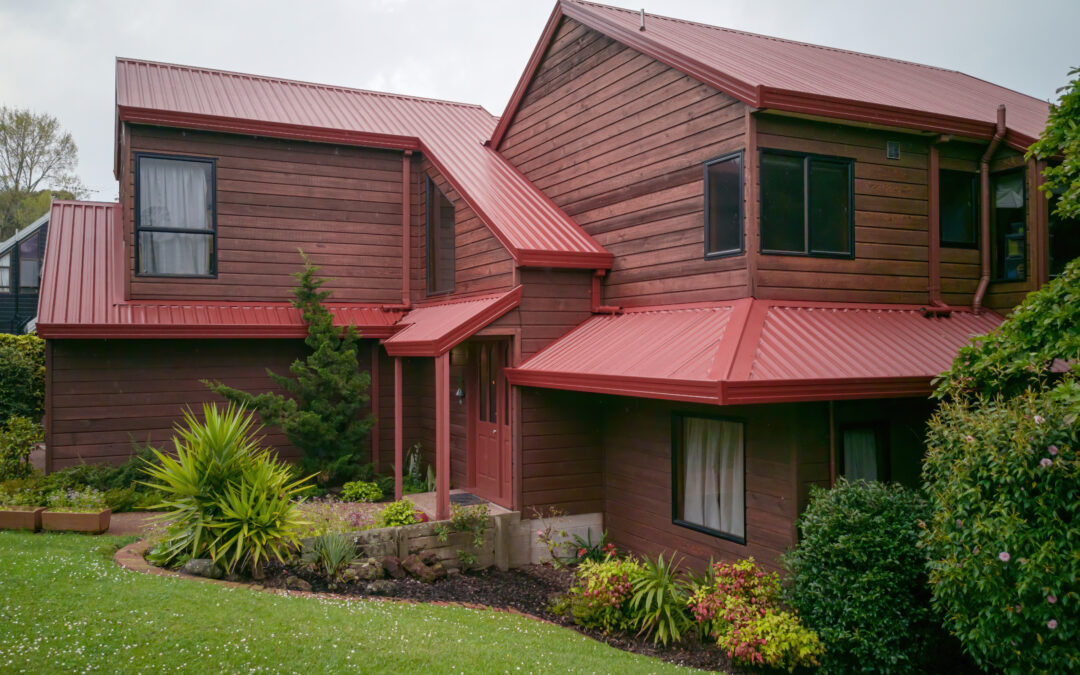
by Jeralin-Admin | Jul 11, 2023 | Metal Roofing
If you’re in the market for a new roof, you’ve no doubt considered the potential of a metal roof. You’re probably wondering if it’s right for you and worth the investment. That’s up to you to decide in the end, but we’d like to lay out the benefits of a metal roof for you to hopefully lead you in the right direction and make sure you know just how great choosing a metal roof can be for you, for your home, and the environment.
The Top 5 Advantages of a Metal Roof
Read on to discover the top five benefits of a metal roof for your home.
Benefit #1: The Longevity of a Metal Roof
Depending on the material, a metal roof can last anywhere from 40 to 70 years, compared to traditional asphalt roofs, which can last for 15 to 20 years at best. That being said, 40 to 70 years is a pretty wide range– to come up with a more solid answer, the two main types of metal roofs must be examined.
- Standing Seam Metal Roof Lifespan: A standing seam metal roof is a series of panels locked together at the seams. Because of its structure, it can expand and contract when the metal heats up or cools down. You can expect to get 30 years out of a standing seam metal roof if it’s installed well and your attic is adequately ventilated. A standing seam metal roof could last 50 years or more if conditions are perfect.
- Screw-Down Panel Metal Roof Lifespan: A screw-down panel metal roof (also commonly referred to as an exposed fastener) is a metal roof that’s screwed down with the fasteners exposed. Unlike a standing seam metal roof, a screw-down metal roof can’t naturally expand and contract and shouldn’t be installed above heated spaces in a home. With proper maintenance, a homeowner could get 25 to 30 years out of a screw-down panel metal roof, and even with no maintenance, 20 years is the norm.
The lifespan of both types of metal roofs depends on a few factors, such as how well the metal roof was installed, how well the roof has been maintained over the years, and the type of weather in the area where the roof was installed. The weather is uncontrollable, but the first two factors are up to you, and could be the difference between a moderately long life span and a well above-average lifespan for your metal roof.
Benefit #2: The Durability of a Metal Roof
Metal roofs are more than prepared to withstand the elements. As mentioned above, metal roofs are renowned for their longevity, and that is due to their outstanding durability and how well the roofs can handle anything that nature may throw it’s way. Metal roofs are ready to handle any potentially harmful element you could think of.
- Wind: With proper installation, metal roofs can withstand wind gusts up to 140 miles per hour without cracking or corroding.
- Hail: Every year, hail can cause billions of dollars in damage to homes in the US, many with traditional asphalt roofs. Metal roofs are highly resistant to hail. In fact, many insurance companies offer discounts to homeowners who have an impact-resistant metal roof.
- Fire: Most metal roofs have a Class A fire-resistant rating which is the highest possible. In areas where wildfire is likely, metal roofs are the best option compared to traditional roofing materials.
- Snow and Ice: Metal roofs are designed to withstand heavy weight loads, and due to the smooth surface, they can encourage the shedding of snow and ice.
Benefit #3: The Energy Efficiency of a Metal Roof
Metal roofs are one of the most energy-efficient roofing options available, and are infinitely more energy efficient than asphalt shingles. Metal roofing provides excellent insulation during the winter months, and metal materials also reflect sunlight, helping keep the home’s energy costs down by 40-50 percent during warmer months.
Traditional asphalt roofs trap heat, absorb it into the home, and drastically increase the indoor temperature. Also, when asphalt shingles are exposed to direct sunlight and other weather elements, they weaken and eventually wear down, thus inhibiting their ability to protect your home from damage.
Though some homeowners are hesitant to select a metal roof due to the cost of installation, many homeowners find that the energy savings and durability more than makeup for the initial investment. Depending on your home’s size and heating and cooling requirements, hundreds of dollars can be saved each month on utility bills, especially during summer.
To read more about the energy-efficiency of metal roofs, check out our blog linked here.
Benefit #4: The Eco-Friendliness of Metal Roofs
In addition to the energy efficiency, metal is one of the most environmentally friendly and sustainable roofing materials currently available, more eco-friendly than asphalt shingles.
- It’s 100% Recyclable: Asphalt shingles contribute approximately 20 billion pounds of waste to United States landfills annually. Metal roofs, however, are 100 percent recyclable and often made with at least 25 percent recycled material.
- It’s Lightweight: A typical asphalt shingle roofing contains hundreds of gallons of oil and needs to be replaced every 12 to 20 years, making them far more wasteful than metal roofs. Metal roofs weigh half of the typical asphalt roofing, putting less stress on your home’s structure and the environment.
- It Helps to Reduce Carbon Emissions: Since metal roofs help better insulate and regulate your home’s indoor temperature, your HVAC doesn’t need to put as much energy into heating and cooling. If multiple homes in a neighborhood use metal roofs, they can significantly reduce the amount of mercury, carbon dioxide, sulfur dioxide, and nitrous oxide generated by HVAC systems.
Benefit #5: The Unique Styles of a Metal Roof:
We mentioned two styles of metal roofs above, but there are also many different aesthetic and stylistic choices. Your options aren’t just limited to silver metal, you can find the perfect look to match your home!
This benefit is so expansive that it can be better summed up in an article all its own, and we’ve done just that:
Contact Werner Roofing For Your Metal Roofing Needs
When considering a metal roof for your home, Werner Roofing would love to help! We’re one of West Michigan’s premier metal roofing installation experts, and we can install a variety of attractive metal roof types. For more information, give us a call at 616-844-5382, or leave us a message online today.
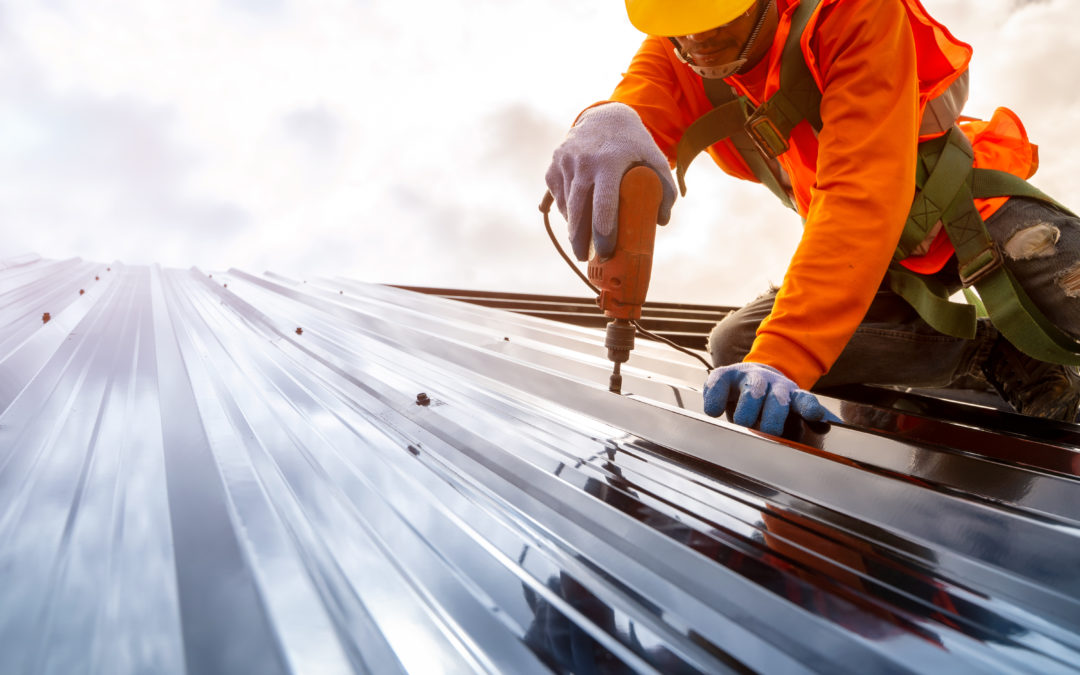
by Jeralin-Admin | Oct 21, 2022 | Metal Roofing
Many homeowners love the idea of a metal roof, but they lack insulation compared to asphalt roofing. So, you might be wondering, “Are metal roofs energy efficient?” Here’s what you need to know.
All About Metal Roofs
There are many reasons why homeowners opt for metal roofs. They’re durable, low-maintenance, and quick and easy to install. The question is – are metal roofs energy efficient? We’re here to give you the inside scoop and explain the pros and cons of having a metal roof on your home.
Are Metal Roofs Energy Efficient?
In short – yes, metal roofs are energy efficient. Since they reflect heat up away from the building they’re attached to, they’re considered one of the most energy-efficient roofing materials on the market. In fact, a high-quality metal roof can save homeowners 10-25% in annual energy costs.
The Pros of Metal Roofs
Whether you’re building a home from scratch or your existing roof needs an update, a metal roof could be an attractive option. Some of the pros of metal roofing systems include:
- Long-lasting: Metal roofs can last between 40 and 70 years, depending on the metal material. Asphalt shingle roofs have an estimated life expectancy of 12-20 years.
- Durable: Metal roofs can withstand winds up to 140 miles per hour without cracking or getting damaged under impact.
- Heat-resistant: Metal roofing materials will not spark or ignite into flames during wildfires or lightning storms.
- Energy-efficient: The sun’s UV and infrared rays reflect off metal roofs.
- Environmentally-friendly: Typically, metal roofs are made from recycled content. Plus, they’re recyclable at the end of their life.
The Cons of Metal Roofs
Though they have many advantages, metal roofs also have some drawbacks. It’s important to take note of the cons of metal roofs:
- Price: Metal roofs can be more expensive than other materials. They last longer, so it’s a good investment, but it will cost more out-of-pocket.
- Noise: During rainstorms, you might hear noise from your metal roof. Adding more insulation to your attic can help alleviate this problem.
- Inconsistent color matching: If your roof requires a repair or you want to add an extension, it could be difficult to find an exact match to your existing material.
- Rust: Some metals rust in certain climates that receive a lot of precipitation.
Invest in Metal Roofs With Werner Roofing
Here at Werner Roofing, we exclusively use metal roofing materials from Sheffield Metals. We trust Sheffield as our only metal supplier because they always guarantee the highest durability and sustainability standards.
Sheffield Metals feature a unique COOLR® technology finish that reflects solar energy before it turns into heat. This technology means that your home will stay cool in the summer without additional energy from your air conditioner, saving you money.
Our Standing Seam Metal Roofs
Werner Roofing is proud to provide top-notch standing seam metal roofs for your home. Standing seam metal roofs are composed of metal panels that run from the top of your roof down to your home’s gutter. The panels are attached by fasteners connected by raised seams about 1-2 inches above the panels’ level.
The raised seams of our metal roofs keep water and precipitation from leaking through the fasteners. Plus, the interlocking seams make your roof resistant to all types of weather and promote thermal movement.
Some more standout features of standing seam metal roofs from Werner Roofing include:
- Lifetime: Approximately 40-70 years
- Durability: Hold up well in all conditions, even against hail and falling trees
- Safety: Flame and wind resistant
- Energy-efficiency: On average, you’ll save anywhere between 10%-25% on your energy bill
- Weight: Hundreds of pounds lighter than other roofing types, meaning that the installation process will be much more efficient
- Eco-friendly: Mostly made of recycled materials and are 100% recyclable after their lifetime has been exceeded
Are You Ready To Invest in a Metal Roof?
Metal roofs are a long-lasting, durable, and energy-efficient roofing option. If you’re ready to upgrade your home with a metal roof, give the Werner Roofing team a call. We specialize in beautiful standing seam metal roofs that are sure to last for decades.
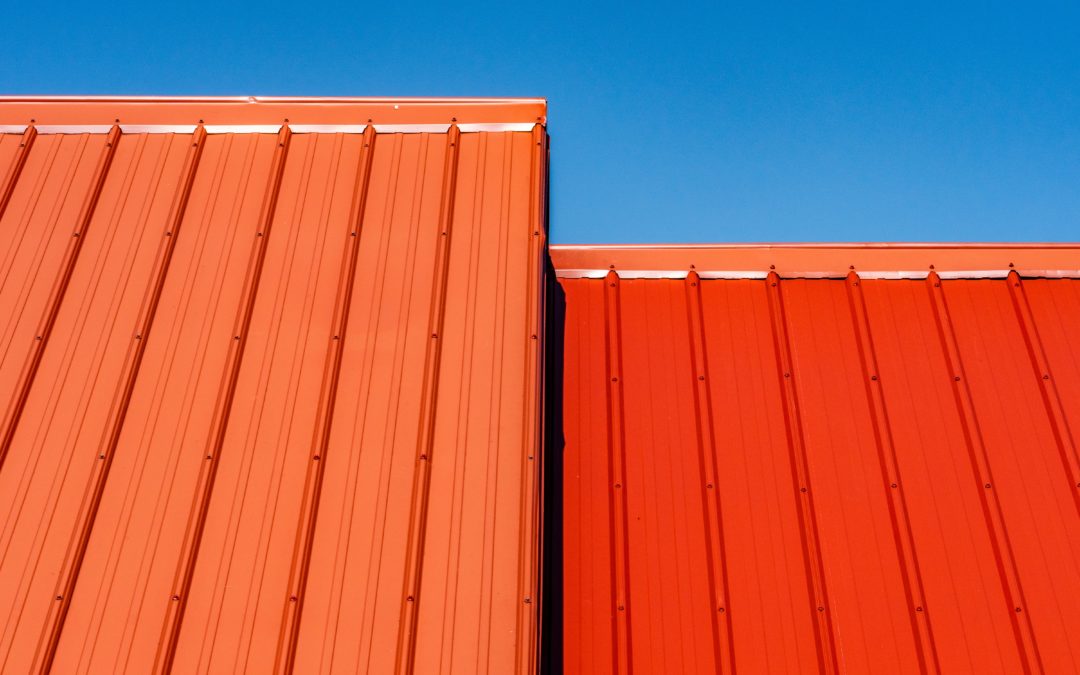
by Jeralin-Admin | Feb 22, 2022 | Metal Roofing
Traditionally, asphalt roofs have been the most popular roofing style. However, the most recent homeowner roofing trend is one that’s maybe less-recognized, but highly valued: metal roofing. And when it comes to that, Sheffield Metals does it best.
Sheffield Metals International (SMI) is an industry leader in standing seam metal roof systems. The company is committed to providing contractors, manufacturers, and wholesalers with quality metal products that are sure to keep their customers happy — and that’s why we’re so glad to offer their products here at Werner Roofing.
Below, we’ll dive into a little more information on Sheffield Metals, what products they offer, and how those products may benefit your home.
About Sheffield Metals’ Standing Seam Metal Roof Systems
Sheffield Metals produces a complete line of standing seam metal profiles for roof systems, both non-engineered and engineered. The brand is highly recognized and respected within the roofing industry because of its countless customization options. No matter if your roofing project is residential or commercial, big or small, high- or low-budget, Sheffield Metals has a standing seam roofing system that will work for you.
Non-Engineered Profiles
Sheffield Metals manufactures seven different non-engineered standing seam metal profiles. From mechanical to snaplock, these profiles offer a range of textures and performance levels you can bring to your roof.
Engineered Profiles
Engineered standing seam metal profiles are where Sheffield Metals’ high-quality guarantee really shines. With seven different options, these profiles are put through various stringent tests to ensure long lasting performance, including:
- Wind uplift testing
- Water penetration testing
- Water submersion testing
- Air infiltration testing
- Impact resistance testing
Benefits of a Sheffield Metals Roof
Any homeowner with a standing seam metal roof from Sheffield Metals will tell you that the benefits of it are almost endless. But for brevity’s sake, we’ve narrowed them down to five broad categories.
Unmatched Durability
Metal roofs are a tough alternative to traditional asphalt roofing. In fact, depending on the type of metal you choose, your Sheffield Metals roof can last between 40-70 years! That’s 2+ decades longer than the estimated lifetime of an asphalt roof.
Due to the extreme strength of the metal, Sheffield Metals roofs hold up in all weather conditions, and are even able to withstand hail and falling trees without suffering cracks or holes. They also allow snow and ice to slide right down the slope of your roof, instead of building up on top and causing pesky, damage-invoking ice dams.
Wide Range of Color Options
Sheffield Metals offers over 30 color options for their standing seam metal roofs, giving you the ability to match any exterior aesthetic you desire. From traditional neutrals to vibrant reds, all the colors are beautiful and tested to ensure long-lasting beauty. Better yet? They’re specifically designed for improved energy efficiency!
Sheffield Metals also allows you to choose a custom color for your standing seam metal roof, at an additional cost.
Low Weight
A Sheffield Metals roof is typically hundreds of pounds lighter than a traditional asphalt roof. Not only does this make for a quick and easy installation process, but it also provides a safer solution for aging homes. The less weight placed on an older building, the easier it is to maintain structural support.
Excellent Environmental Responsibility
Metal sheets are much easier to recycle than asphalt shingles. Therefore, they’re a bit more of an environmentally friendly home exterior solution.
Sheffield Metal roofs are also designed and painted to better reflect the sun’s heat, which can save you a lot of energy and money (up to 25% off your energy bill!) when it comes to cooling your home in the hot summer months.
Amazing Warranty Options
All of Sheffield Metals’ engineered standing seam metal profiles, as well as some of their non-engineered ones, are eligible for two amazing product warranties: a 40-year transferable paint warranty and a 5 to 35-year weathertight warranty. Both of these warranties ensure your financial investment is protected and make a Sheffield Metals roof a smart, secure option.
At Werner Roofing, we’re proud to offer Sheffield Metals roofing materials to our customers. With a variety of styles and durability that will keep your roof looking great for years, a Sheffield roof is a good investment for your home. To get a new roofing project started, give our team a call or contact us online.
OUR FREE ROOF INSPECTION
How do you know when it’s time for a new roof? The only way to be sure of your residential roof’s current condition is to have a licensed professional personally inspect it. Werner Roofing is proud to offer free roof inspections for every client, so you can be sure of your roof’s condition. Every Werner Roofing inspection comes complete with our promise: “We won’t recommend or sell a roof replacement unless it’s necessary.”
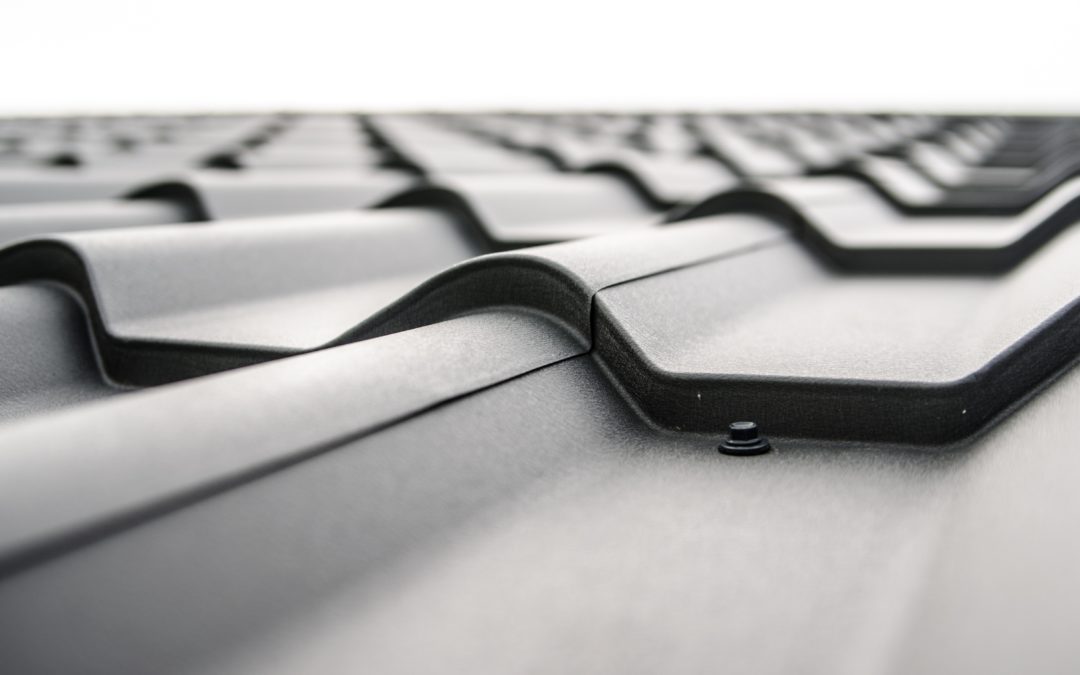
by Jeralin-Admin | Dec 17, 2021 | Metal Roofing
With their sleek lines, energy efficiency, and of course their durability and longevity, metal roofs are often taken into consideration when the time rolls around for a roof replacement. But any roof replacement is an expensive project, which is one key reason many homeowners wonder if they can skip tearing off the old shingles, especially if they’re opting for a lighter metal roof replacement. So, can you put a metal roof over shingles?
The answer is sometimes — but don’t worry, we’ll explain!
When It’s Possible to Put a Metal Roof Over Shingles
The good news is, since metal roofing is lightweight, it can easily be installed over top of asphalt shingles, BUT (notice that’s a big but!), those shingles must be in good condition. Where there’s worn shingles, there’s likely some water damage and aging going on underneath, which means that the screws to attach the metal won’t be secure.
Before putting a metal roof over shingles, it’s also important to make sure that the strength of the trusses and the structural integrity of the decking has not been compromised over time. So, before going all in on the idea of installing a metal roof over your existing one, it’s important to have your current roof inspected. That’s the only way to truly know whether you’re making a safe and wise choice.
Of course, even if your old roof is showing some wear and tear, if it’s just a matter of some minor repairs needed, and the cost of fixing a few things is less than the expense of removing it all, well, then you’re back in business! You can make repairs then put that metal roof over top of your old one after all.
When You Shouldn’t Put a Metal Roof Over Shingles
Sure, everyone would prefer to save money by bypassing the time-consuming and expensive removal of an existing roof before installing a metal one, but there are times when you just plain should not do it.
If the majority of your shingles are damaged and deteriorating, if there are saggy areas of your roof, rotting wood, or leaking issues, it’s better to have all new material put in underneath to ensure a safe, sound roof overhead.
After all, the whole point of choosing a metal roof is the peace of mind that comes with its durability. It doesn’t make sense to place it on top of a shaky, unstable foundation.
What to Know When Putting a Metal Roof Over Shingles
If it turns out your shingles are in good condition and you decide to put a metal roof over them, new underlayment is typically laid down over the shingles first, providing a barrier between them and the metal to protect shingle granules from wearing away. This also serves as an extra line of defense for your roof in the case that water should ever sneak beneath the metal. Good to know, right?
It’s also good to know the pros and cons of metal roofs, as well as whether everything you’ve heard about them is true — there are a lot of myths about metal roofing out there. Learn all you can to decide if going with metal is the right roofing choice for you.
Lastly, know that there are a variety of metal roofs to choose from, so whether to install it over shingles is not the only decision you’ll have to make!
Interested in Putting a Metal Roof Over Shingles?
All in all, it is absolutely possible to put a new metal roof over an old shingled one under the right circumstances and conditions. Not sure if your current roof is up for it? Give Werner Roofing a call!
If you’re considering a metal roof, we’d be happy to assess your current shingle roof to determine if it’s a good candidate for laying a metal roof overtop. You can count on us to give it to you straight and only make recommendations that are true to your roof’s condition. We always try to save you money on your roofing project wherever possible — like our free inspection, for instance! Contact our team to schedule yours today.
OUR FREE ROOF INSPECTION
How do you know when it’s time for a new roof? The only way to be sure of your residential roof’s current condition is to have a licensed professional personally inspect it. Werner Roofing is proud to offer free roof inspections for every client, so you can be sure of your roof’s condition. Every Werner Roofing inspection comes complete with our promise: “We won’t recommend or sell a roof replacement unless it’s necessary.”
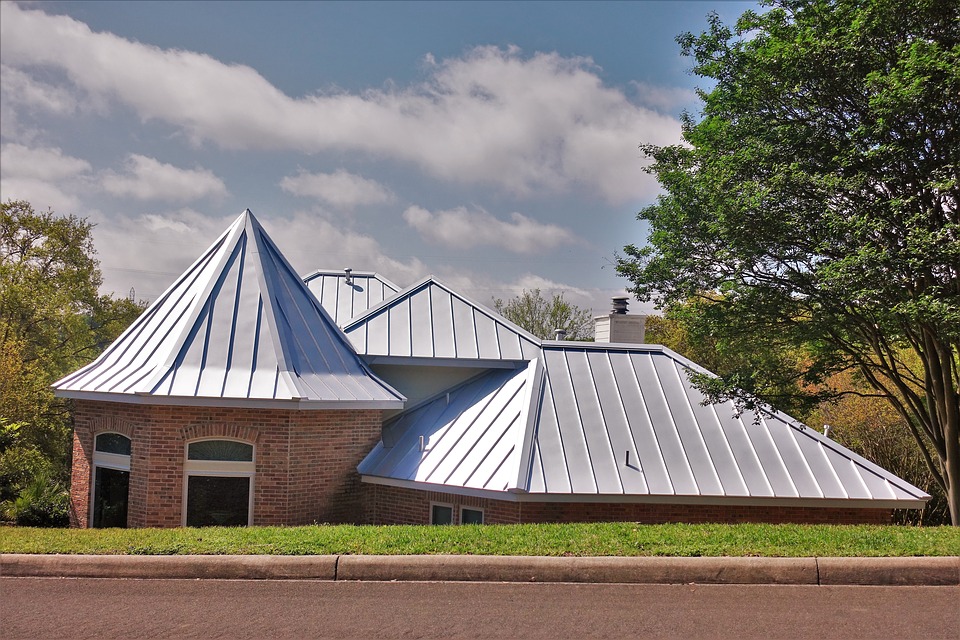
by Jeralin-Admin | Oct 4, 2021 | Metal Roofing
There are three common types of metal roofs: exposed fastener, stamped profile, and standing seam. But since each of them offer great durability, cleanliness, and energy efficiency, you may be left wondering what kind of metal roof is best for your home.
At Werner Roofing, our team of experts believe that standing seam is the best kind of metal roofing. It’s what we install and what we work with every day, so we know it well, and we know it works. Below, we’ll give more details about what standing seam metal roofing is, and why we believe it’s the best metal roof for your home.
What Is Standing Seam Metal Roofing?
Standing seam metal roofs consist of metal panels that are fastened together at raised seams. The panels sit vertically, and are long enough to reach from the top of your roof, all the way down to the bottom of it. They can be attached to your roof with a clip, or can be fastened to your roof decking with a fastener flange. No matter which way you install it, the important thing to remember about standing seam metal roofing is that the fasteners are completely hidden.
Standing seam metal roofs often come with a variety of customization options. From different colors and shapes to custom lengths, widths, and thicknesses, you can choose the option that best fits your desired home aesthetic. Learn more about What is a Standing Seam Metal Roof.
What Are the Advantages of Standing Seam Metal Roofing?
There are many reasons that standing seam is the best metal roof choice. Let’s explore five of them below:
1. Hidden Fasteners
As mentioned previously, the greatest benefit of a standing seam metal roof is that the fasteners are hidden. Although this requires a bit more installation time, it pays off by producing a clean, uninterrupted look, and by eliminating the possibility of any holes being present in the roofing material. The hidden fastener design helps deliver on all of the following benefits as well.
2. Resistance to Leaks and Weather Conditions
Because standing seam roofs have hidden fasteners, the risk of leaks is minimized substantially. It also means that fasteners aren’t exposed to UV rays, moisture, wind, and other elements that may cause them to deteriorate over time.
Also, standing seam metal roofs’ long, flat, sloped panels allow for effortless ice and snow removal. Instead of sitting on top of your roof for long periods of time, chunks of precipitation will slide right off with ease.
3. Clean Appearance
Also due to hidden fasteners, standing seam metal roofs allow for a sleek, clean appearance. This uninterrupted look can’t be found in other types of metal roofing, so it’s sure to boost your home’s exterior aesthetic and curb appeal.
4. Low Maintenance
Compared to other types of metal roofs, standing seam roofs require a lot less maintenance. You won’t need to constantly check for leaks or rust around exposed fasteners. However, it’s still always a good idea to hire a professional for an annual roofing inspection, just to be sure there aren’t any unseen problems that could lead to extensive damage and expensive repairs.
5. Energy Efficiency
While other types of metal roofing are also energy efficient, the flat metal panels can make standing seam metal roofing one of the most rewarding choices. By applying highly reflective Energy Star paints and finishes to your roof’s surface, you can reflect a lot of solar energy and reduce your home’s cooling costs by up to 25%.
Metal roofs are one of the best, longest-lasting roofing options on the market — but the right kind and right installation of your metal roof matters. For top quality workmanship and materials, trust Werner Roofing. We work exclusively with Sheffield Metals, a company we trust for durable, energy efficient, vibrant metal roofing materials. If you’re considering a metal roof for your home, contact our team to discuss the best type for your home.
OUR FREE ROOF INSPECTION
How do you know when it’s time for a new roof? The only way to be sure of your residential roof’s current condition is to have a licensed professional personally inspect it. Werner Roofing is proud to offer free roof inspections for every client, so you can be sure of your roof’s condition. Every Werner Roofing inspection comes complete with our promise: “We won’t recommend or sell a roof replacement unless it’s necessary.”

